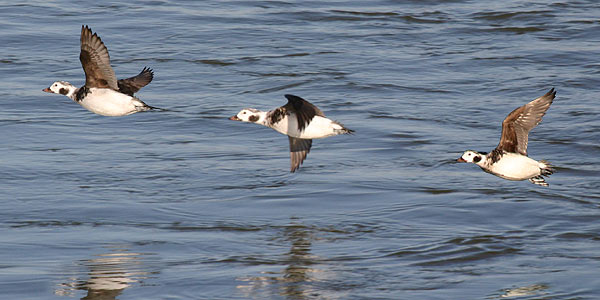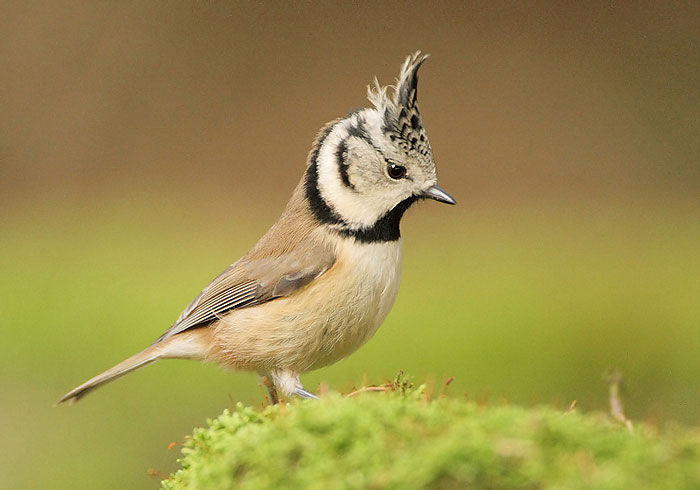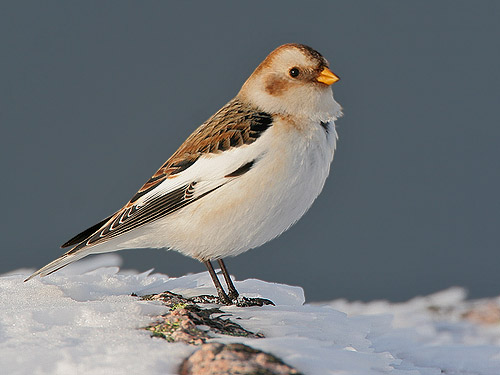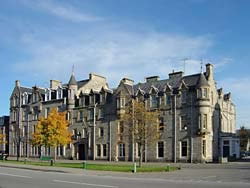|
Birding the Scottish Highlands in Winter
Gordon Hamlett describes the delights in store with a short stay at the Grant Arms Hotel in Grantown-on-Spey and the Birdwatching and Wildlife Club.
|
 |
|
If you've ever fancied a birdwatching trip to the Scottish Highlands, why not visit this winter? The historic fifty-bedroom Grant Arms Hotel in Grantown-on-Spey is home to the Bird Watching & Wildlife Club –the ideal base for your wildlife watching holiday (click here to read more about the Bird Watching & Wildlife Club).
Author of popular birding book Best Birdwatching Sites in the Scottish Highlands, Gordon Hamlett, writes a piece for the BWWC's monthly newspaper, The Watcher. Gordon regularly spends time birdwatching in the Highlands and here he suggests locations close to the Hotel to explore over winter. Gordon's book is a "must pack" item for a holiday in this area:
Just because the days are short, doesn't mean that there isn't plenty of good birding around in November and December. If you are looking for large numbers of birds, then a trip to the coast is recommended. The picnic site at Roseisle is one of my favourites. A short stroll out to the beach reveals fantastic views of Burghead Bay spreading out in front of you. Seaduck overwinter in large numbers in the bay. Last November there were over 1,000 Long-tailed Ducks, several hundred Common and Velvet Scoters and 25 Slavonian Grebes between Burghead and Findhorn. You should find Eiders, Red-breasted Mergansers and assorted divers too.

Long-tailed Duck, copyright Tim Avery, from the surfbirds galleries
Look for flocks of waders along the beach— Bar-tailed Godwits, Knot, Redshanks, Curlews and Oystercatchers are all present. Check flocks of small birds too: there are good numbers of Snow Buntings along this stretch of coast.
As ever, whenever there are large numbers of birds in the area, there are hunters too. Large falcons putting the fear of God into everything in the area will surely be Peregrines. Waders and ducks are their preferred food but they will take anything that comes their way including other birds of prey! Merlins are much smaller falcons, with the ability to twist and turn in mid-air as they stay glued to the tail of their intended victim: finches, pipits and buntings make ideal meals for them. Sparrowhawks can also twist and turn easily, but they don't have the pointed wings of a falcon. Look for an obvious bulge on the back edge of the wings and a characteristic flap, flap glide flight.
The woods at Roseisle shouldn't be overlooked either. Walking back from the beach to the car park on our last visit, a Treecreeper was feeding within a yard of the path, though this was soon ignored as a Crested Tit gave stunning views. If you are in the area, then the local harbours - Burghead, Nairn and Lossiemouth - are well worth checking out. Look for more waders including Purple Sandpipers, Turnstones and Dunlin on the rocks as well as the likes of Guillemots and Razorbills in the harbours themselves. Nairn harbour, Burghead harbour, Burghead Beach (also good for seals) and Lossiemouth's West Beach can all be viewed from the car, ideal if the weather turns inclement - something that is not unknown in Scotland.

Crested Tit, copyright Rudi Debruyne, from the surfbirds galleries
As the clock ticks over from 23.59 on New Year's Eve to 00.01 on New Year's Day, something very strange happens to birders. The previous year's birding is completely forgotten. It doesn't matter whether last year's total is beaten or not, we, er I mean you, have to start ticking things off like there is no tomorrow. There is a flurry of activity in early January to get the list started, followed by large peaks in April/May when the migrants arrive and September/October when vagrants tend to turn up. January 1st is traditionally a birding day and the combination of birders squinting through their binoculars and scopes, trying to separate Bar-tailed and Black-tailed Godwits while simultaneously nursing an almighty hangover is always a joy to behold.
The more discerning lister though will want to chase the local specialities, especially if this is going to be the only visit to Scotland this year. So, you should aim to explore, say, Anagach Woods behind the Grant Arms Hotel, looking for Crested Tit, Capercaillie and Crossbill of some variety or other. A visit to Findhorn Valley might produce a Golden Eagle and Raven, as well as Red Deer. If the weather is snowy, there is a chance that Snow Bunting and Ptarmigan could be forced down to the car park at Cairngorm Mountain. And the days are sufficiently short for you to watch the Hen Harrier coming in to roost at Insh Marshes and still get back to the Hotel for your evening meal.

Snow Bunting, Cairngorm , copyright Steve Round, from the surfbirds galleries
February is a good month to look for birds displaying. Ravens can often be seen tumbling and messing about in the air currents. Findhorn Valley is a good place to try. You will often hear the birds before you see them - listen out for a deep bass "kronk".
In woods, such as nearby Abernethy Forest, Crossbills are early starters. Always noisy birds, listen out for parties flying over giving their chip, chip calls or dropping cones from the tops of tall pines. Great Spotted Woodpeckers start to drum in earnest and are easy to track down, especially in deciduous woodland where your views are not hindered by leaves on the trees. Sometimes woods are best explored from the outside rather than the inside and fine February days are excellent for watching Sparrowhawks displaying over the woods.
Closely related to the Sparrowhawk, the much rarer Goshawk is a notorious beginners' bird. In the same way that Buzzards are often mistaken for Golden Eagles, and indeed, are known locally as "tourist eagles", so many claims of Goshawk relate to Sparrowhawks. A male Goshawk is about the size of a large female Sparrowhawk, while females are about the size of a Buzzard. There are a few pairs of Goshawk in the area, usually in large coniferous woods, though locations are kept secret due to pressures of persecution. If you see a bird up close, there is little danger of misidentification as a Goshawk is a hugely powerful bird, with a deep, barrelled chest and slow deliberate wing beats. It really makes a Sparrowhawk look puny by comparison. Birds displaying over woods are far trickier and you are going to require a very good field guide indeed to separate a Goshawk from its smaller cousin.
So if Gordon Hamlett has whetted your appetite to visit this winter, why not take advantage of the Grant Arms Special Surfbirds Offer?
4 nights Dinner, Bed & Breakfast only £195pp – with a free bottle of wine on your first night!

To book a birdwatching break at the Grant Arms Hotel this winter call the Reservations Team on 01479 872526 or email bookings@bwwc.co.uk
For more information about the Bird Watching & Wildlife Club at the Grant Arms Hotel, please visit: www.bwwc.co.uk
(The Surfbirds Special Offer is valid for stays from 1st October 2010 to 28th February 2011, excluding Christmas and New Year and subject to availability. This offer includes one free bottle of house wine per room booked. Please quote "Surfbirds" when booking.)
|

